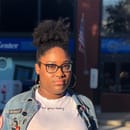CONTENT WARNING: This article discusses sexual violence on college campuses. All information in this article is from multiples online resources for sexual violence victims and anyone wanting to increase campus safety.
Did you know every 73 seconds an American is sexually assaulted? About 11% of all students, on college campuses, experience rape or sexual assault through physical assault, violence, or incapacitation. With these numbers in mind, I felt that it was important to write about something that isn’t discussed nearly enough in America, although most understand that sexual violence can happen anywhere and to anyone. The Office on Women’s Health describes the sexual assault as “any type of sexual activity or contact that you do not consent to.” Rape is defined by Centre Safe as “forced sexual intercourse, including vaginal, anal, or oral penetration.” Being on a college campus there are many spaces where an unwanted sexual activity or forced intercourse could happen, so here are some ways to increase campus safety on your campus.
-
Know Your On-Campus Resources: If you or a friend has experienced or been a witness to an incident of sexual assault it is important to know the safe spaces to go to receive help. That could be the title ix office, your campus police station, or even a trusted person on campus. If your campus has emergency phones or any other emergency numbers make sure to take note of them as well.
-
Understand What Consent Looks Like: In some cases of sexual assault, there is often a lack of communication before engaging in any type of sexual activity. Remember that consent is about communication. Not only that, but consent should be given whenever sexual activity begins, consent for one encounter one time does not mean you are giving consent for increased or recurring sexual contact. Also, know that you can change your mind at ANY time. Just know that any unwanted sexual contact with another person, no matter your relationship with that person, qualifies as sexual assault.
-
Do What is Best for You: At the end of the day, no one can make you do anything you do not want to do. If you do not wish to take action after sexual violence that is YOUR CHOICE. Just always understand that any type of trauma is easier to cope with when you have support. One of the most common manifestations of PTSD is avoidance, and this often makes it difficult for survivors to tackle their trauma head-on, particularly if the trauma is acute or recent.
Here is a list of Hotlines and call centers for sexual assault and domestic abuse survivors for women and men; young adults and children; disabled, trans, nonbinary, and LGBTQIA+ survivors. Just remember YOU ARE NEVER ALONE in instances of sexual assault or rape.
Anti-Violence Project
212-714-1141
Childhelp
1-800-422-4453
Darkness to Light
1-866-FOR-LIGHT (866-367-5444)
You can also text “LIGHT” to 741741 for crisis support with a trained counselor
RAINN
800-656-HOPE (800-656-4673)
Safe Horizon
1-800-621-HOPE (1-800-621-4673)



